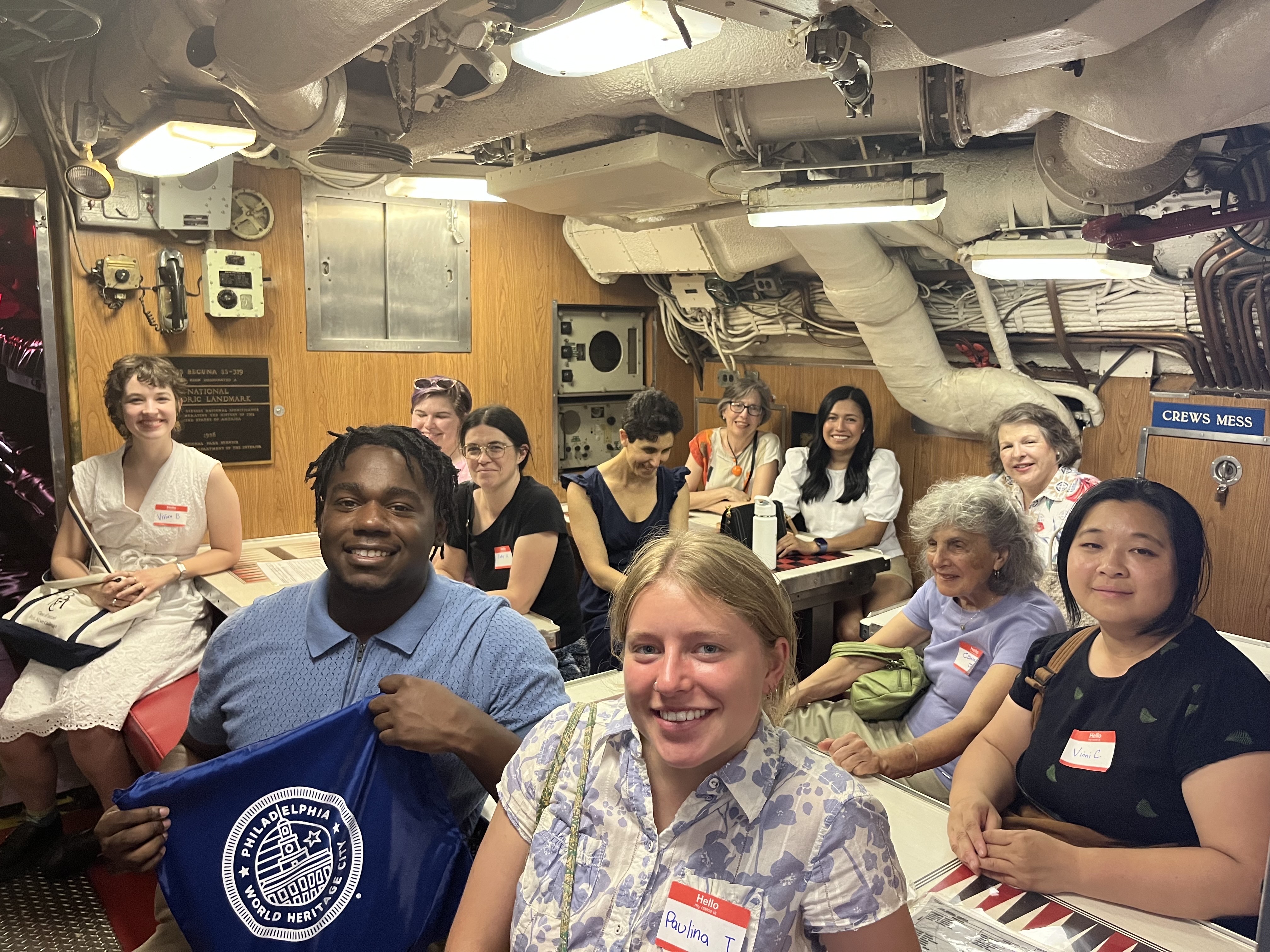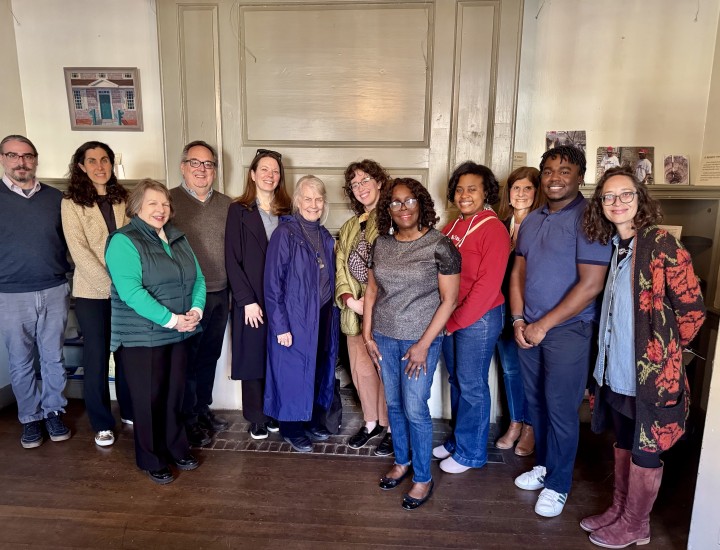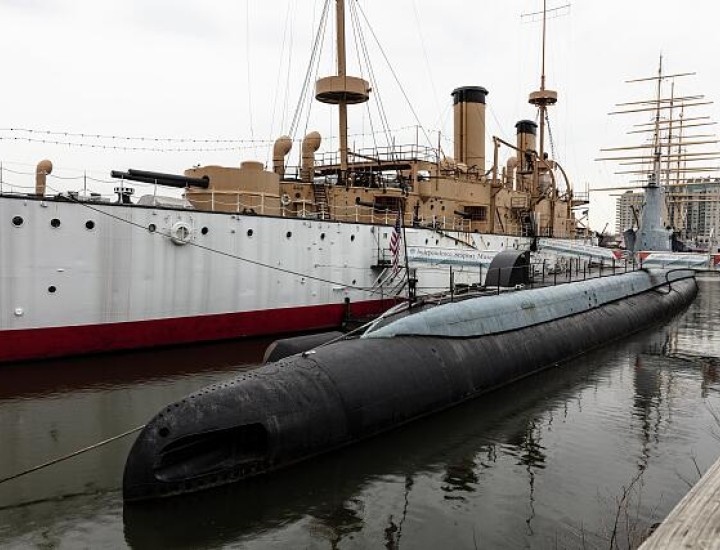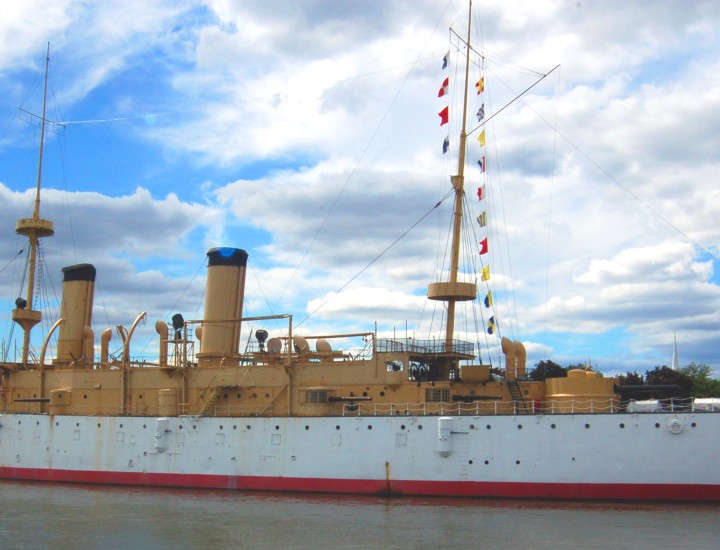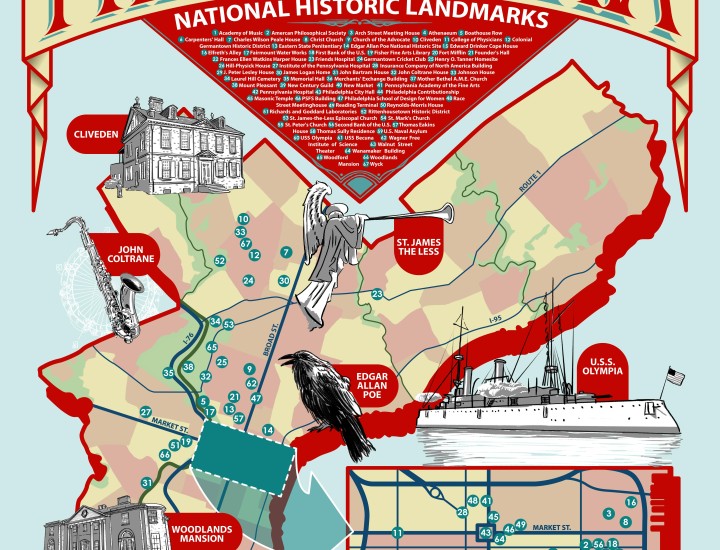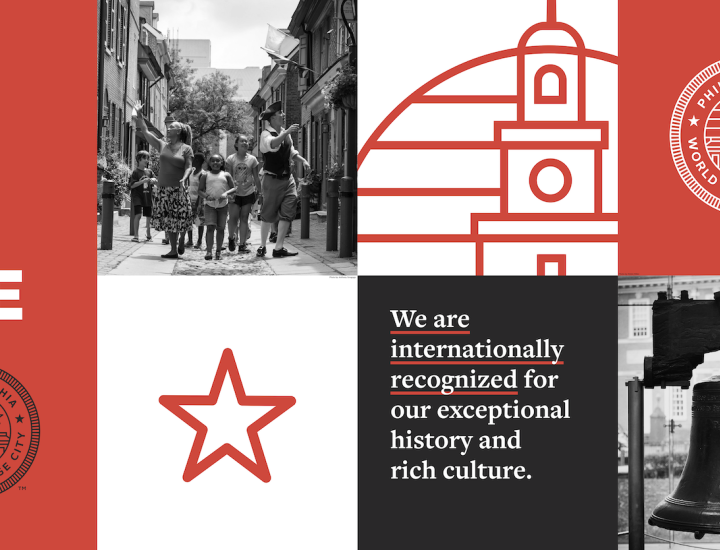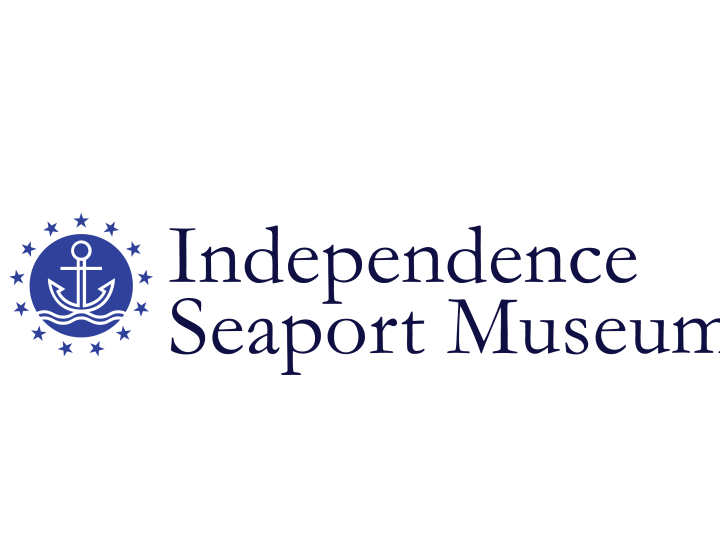GPA continues National Historic Landmark tour series at the Independence Seaport Museum
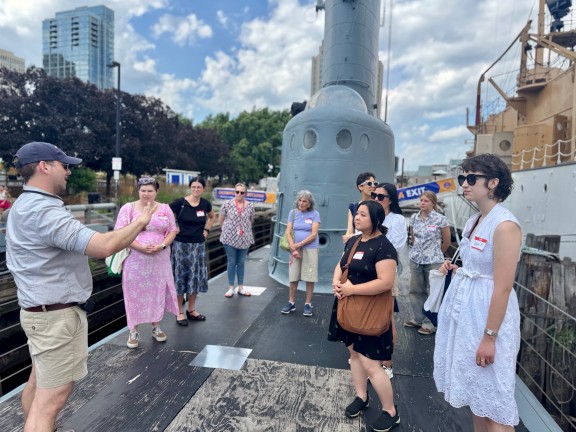
To continue Global Philadelphia Association’s National Historic Landmark (NHL) site visit series, the GPA team led a tour to explore not one, but two NHL sites at the Independence Seaport Museum. This engaging field trip drew a number of esteemed guests and local preservation leaders, all united in their commitment to deepening public understanding of Philadelphia’s remarkable past and strengthening the network of 67 NHLs across our World Heritage City.
Located directly on the banks of the Delaware River, the USS Olympia and the USS Becuna are centerpiece exhibits of the Seaport Museum and offer an extraordinary glimpse into America’s maritime history. As noted by Alexis Furlong, Director of Marketing and Communications at the Independence Seaport Museum and one of the trip’s facilitators, these vessels tell a layered story of Philadelphia’s evolving role as a naval and industrial power, from the age of William Penn through the global conflicts of the 20th century.
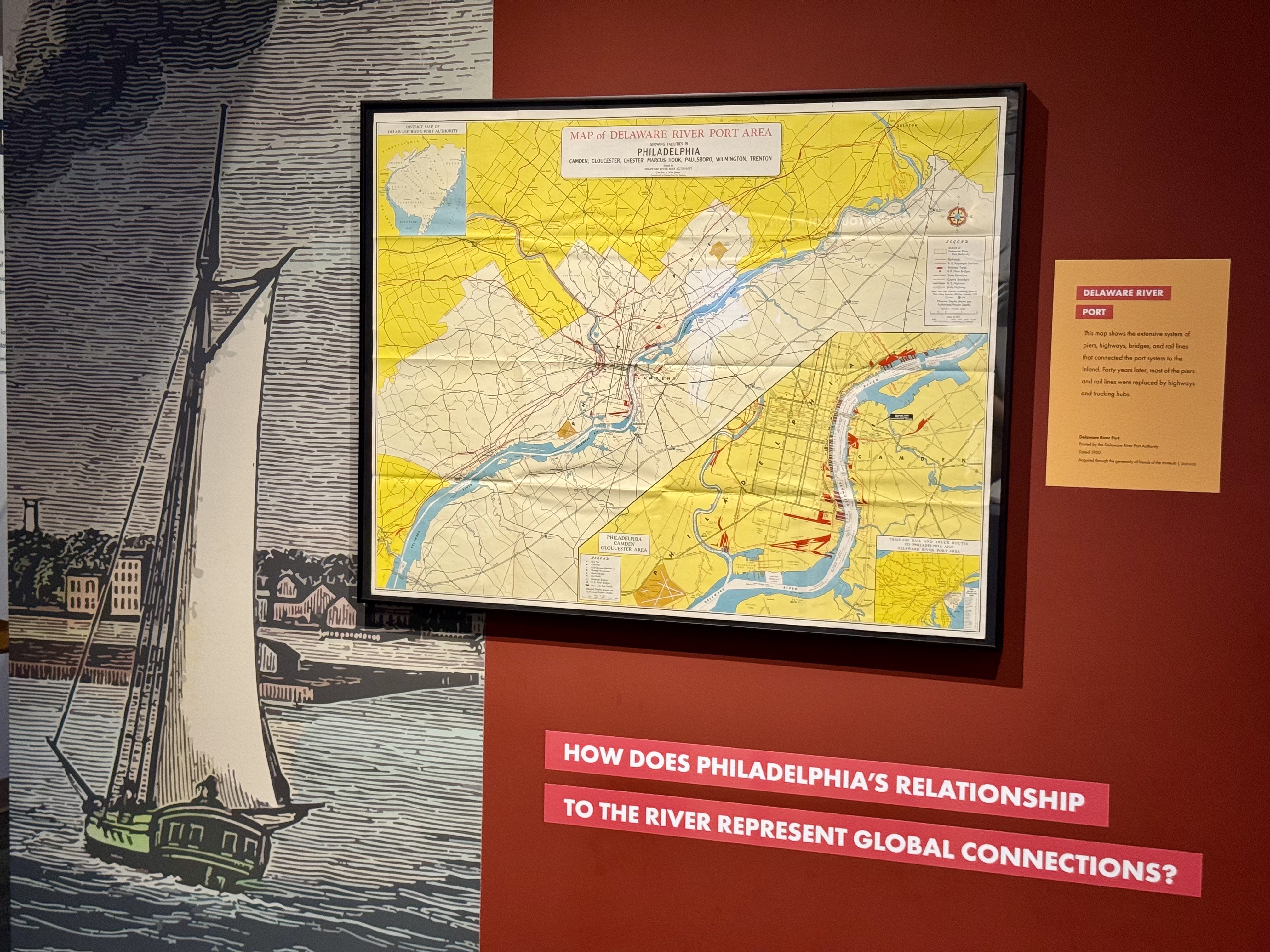
Commissioned in 1895, the USS Olympia is the oldest surviving steel warship in the world and a defining artifact of the late 19th-century naval arms race. A protected cruiser of the U.S. Navy, Olympia gained international fame as Commodore George Dewey’s flagship during the Battle of Manila Bay in 1898—the opening salvo of the Spanish-American War. Her decisive victory over the Spanish fleet not only signaled the fall of Spain’s colonial empire but also cemented the United States’ emergence as a global naval power.
Following decades of distinguished service—including roles during World War I and as a training vessel—Olympia was chosen for a final, solemn mission in 1921: to return the body of America’s Unknown Soldier from France to Arlington National Cemetery. As explained by our guide, maritime historian Hugh McKeever, the ship and its crew braved two Atlantic hurricanes during this crossing. The large casket, too big to store below deck, was secured on deck with the crew and honor guard strapped alongside it—an act of duty and reverence that continues to resonate a century later.
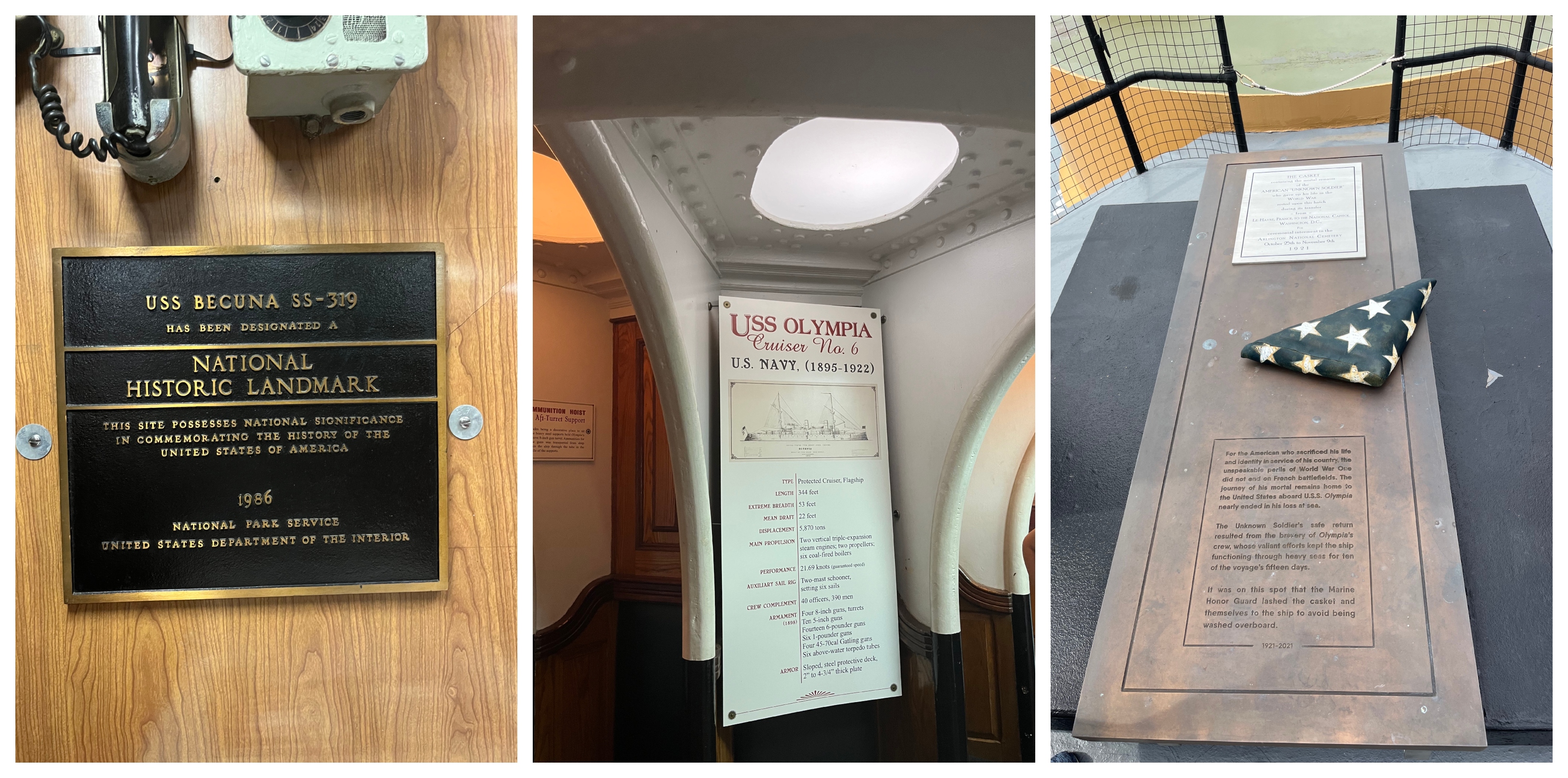
Equally compelling is the USS Becuna, a World War II-era fleet submarine affectionately dubbed the “Tiger of the Sea” by her crew. Commissioned in 1944 and deployed to the Pacific theater, Becuna completed five war patrols under the command of Henry D. Sturr, sinking an estimated 18,000 tons of enemy shipping. For these contributions, her crew received four Battle Stars and a Presidential Unit Citation.
After the war, Becuna transitioned to peacetime service, undergoing significant modernization in the early 1950s as part of the GUPPY (Greater Underwater Propulsive Power) program. This upgrade, featuring a snorkel system adapted from German U-boat technology, greatly increased her submerged endurance and speed. She served actively until 1969 and was later transferred to the Independence Seaport Museum, where she now rests beside Olympia as a living classroom for history enthusiasts.
Aboard the submarine, visitors on the field trip learned about the intensely confined environment and demanding conditions endured by her 80-man crew. The tour offered insights into daily life aboard a wartime submarine—from torpedo operations to shift rotations—highlighting the grit and ingenuity required for underwater warfare.
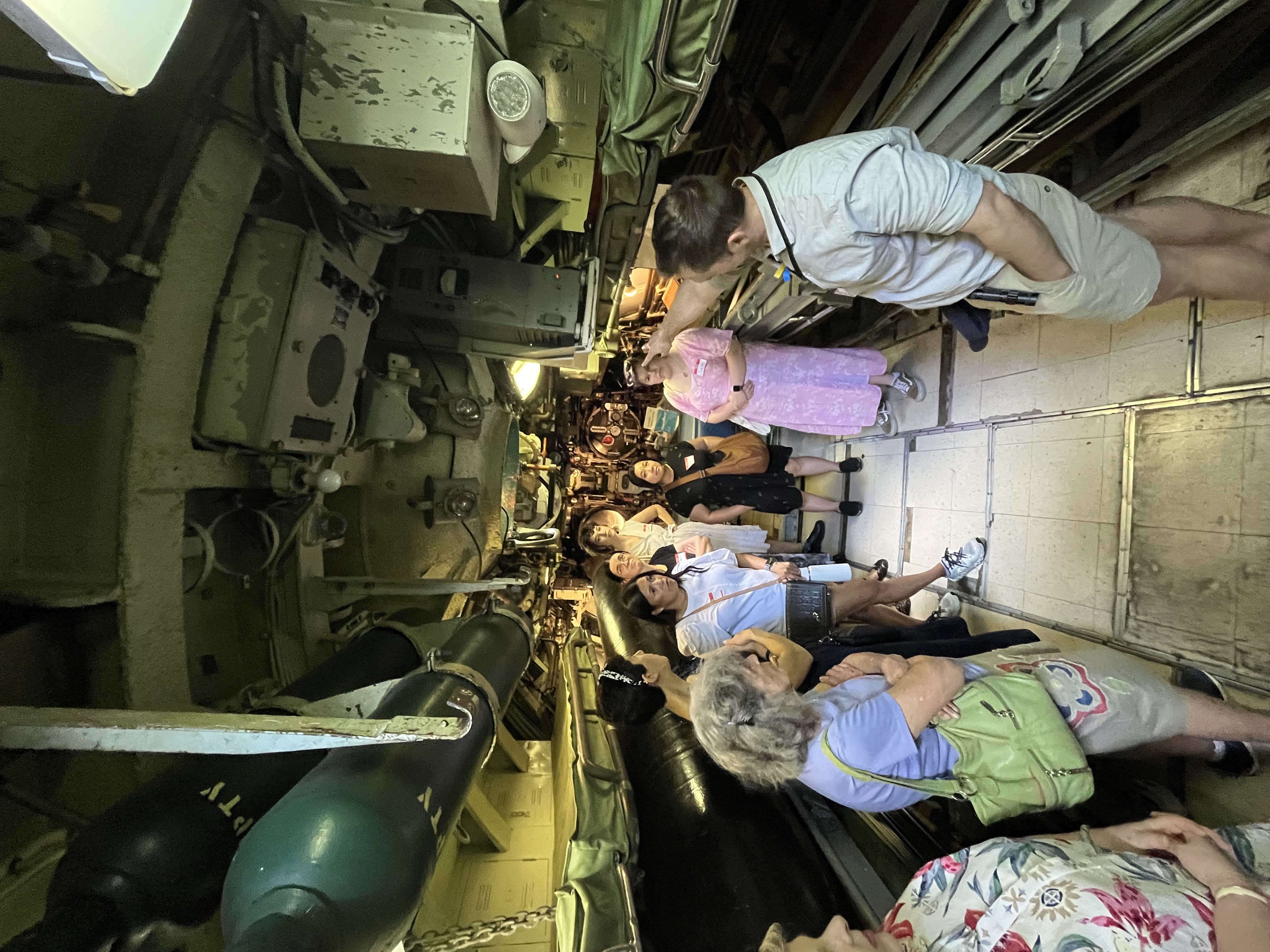
Beyond these two legendary vessels, the Independence Seaport Museum offers robust educational programming. From hands-on boat-building classes to SAILOR and Youth Ambassador opportunities for high school students, the museum remains committed to cultivating the next generation of stewards for maritime heritage. Ms. Furlong emphasized that the best way to become engaged and involved at the museum is by simply visiting and learning about the stories and history held in the vessels standing there.
This excursion to the Seaport Museum was both informative and deeply moving. For those eager to understand the roots of American naval history, along with Philadelphia’s vital role in it, a tour of the USS Olympia and USS Becuna is not to be missed. These vessels stand not only as relics of war, but are reminders of national service, sacrifice, and innovation, anchored in the waterways of the Delaware.
